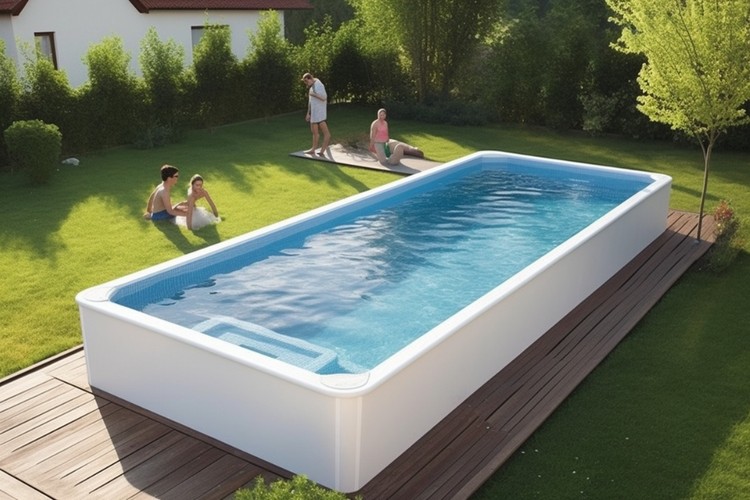Inflatable Pool Guide: Pick, Set Up, and Maintain
Inflatable pools are an affordable, portable way to bring water fun to your backyard without the expense of a permanent pool. This guide covers choosing the right size, essential build features, setup tips, routine maintenance, safety precautions, and pricing to help you enjoy seasonal swimming with confidence.

Inflatable Pool Guide: Pick, Set Up, and Maintain
Key Features That Make Inflatable Pools Worth Buying
Inflatable pools have come a long way from simple blow-up tubs. When shopping, prioritize durable materials like heavy-gauge PVC or reinforced vinyl to resist punctures and UV degradation. Pools with multiple air chambers improve structural stability: if one chamber leaks, the others keep the pool usable until you can repair it. Built-in drain plugs speed up water removal, and models that accept filter pump hookups can keep water cleaner for longer stretches of use.
Also look for reinforced sidewalls or double-layer seams, which reduce ballooning and wear. A non-slip textured bottom adds a layer of safety, especially for households with children. Premium options sometimes include extra features such as cup holders, inflatable seats, and integrated canopies for sun protection.
Choosing the Right Size and Type for Your Backyard
Think about who will use the pool and where you’ll place it. Small kiddie pools (about 4–6 feet across) are great for toddlers and short-term cooling, while family-sized circular pools in the 10–12 foot range provide more room for multiple people. Larger round or rectangular options (12–15 feet or 8x12 to 12x24 ft) are better if you want to swim or entertain a larger group.
Consider depth as well: shallow models are safer for young children, while deeper inflatable pools suit older kids and adults who want a proper swim. Measure the intended area carefully and ensure you have enough clearance for bottom padding, water displacement, and safe access.
Easy, Safe Setup
Preparation is half the battle. Clear the site of rocks, sticks, and sharp debris, then lay down a protective ground cloth or foam pad to reduce puncture risk and provide comfortable footing. Most inflatables can be filled with an electric pump in 10–15 minutes; manual pumps work too but take longer.
Inflate the chambers in stages, following the manufacturer’s guidance for firmness to avoid overinflation. When filling with water, stop several inches below the rim to allow for water displacement once people enter the pool. Confirm the surface is level; uneven ground can strain seams and cause the water level to be inconsistent.
Routine Maintenance and Water Care
Keeping the water clean extends the life of your pool and keeps swimmers healthy. Test water chemistry regularly—ideally daily during hot weather—and maintain recommended chlorine or sanitizing levels to deter algae and bacteria. Smaller kiddie pools are easiest to empty, clean, and dry after each use to avoid stagnant water issues.
For larger inflatable pools, install a compatible filter pump and run it according to manufacturer recommendations to circulate and filter the water. Use gentle, non-abrasive soap and a soft cloth to wipe down the walls and bottom weekly; avoid harsh cleaners that can weaken seams or damage the liner.
Inspect the pool frequently for signs of air leaks, worn seams, or punctures. Minor punctures can often be patched with repair kits supplied by the manufacturer. When draining, use the drain plug and direct runoff to a suitable area or to waste lines in accordance with local guidelines.
Pricing and Popular Pool Types
| Pool Type | Size Range | Average Price |
|---|---|---|
| Kiddie Pool | 4–6 ft diameter | $15–30 |
| Family Pool | 10–12 ft diameter | $60–150 |
| Premium Pool | 12–15 ft diameter | $150–300 |
| Rectangular Pool | 8x12 to 12x24 ft | $200–500 |
Prices, rates, or cost estimates mentioned in this article are based on the latest available information but may change over time. Independent research is advised before making financial decisions.
Safety Best Practices for Backyard Use
Safety should be your top priority. Never leave children unattended around water, even in shallow pools. Establish clear pool rules—no running, no diving, and limit rough play. If local codes require it, set up temporary fencing or barriers to restrict unsupervised access.
Remove ladders or steps when the pool is not in use to reduce unsupervised climbing. Use a pool cover where possible to prevent accidental falls and to keep debris out. Keep rescue equipment, such as a life ring or reaching pole, nearby, and ensure at least one responsible adult is supervising whenever children are present.
Storing and Extending Pool Life
When the season ends or you need to store the pool, drain and thoroughly dry all surfaces before folding to prevent mold and mildew. Deflate slowly and fold loosely to avoid sharp creases. Store repair kits and the pump with the pool so you’re prepared for next season. Protect the pump from moisture and pests by storing it indoors.
With the right selection, proper setup, and regular upkeep, an inflatable pool can provide months of refreshing, family-friendly enjoyment without the expense or permanence of an in-ground installation. They offer flexibility in size and placement, are relatively simple to care for, and, when used responsibly, are a safe way to bring water recreation to your backyard.






